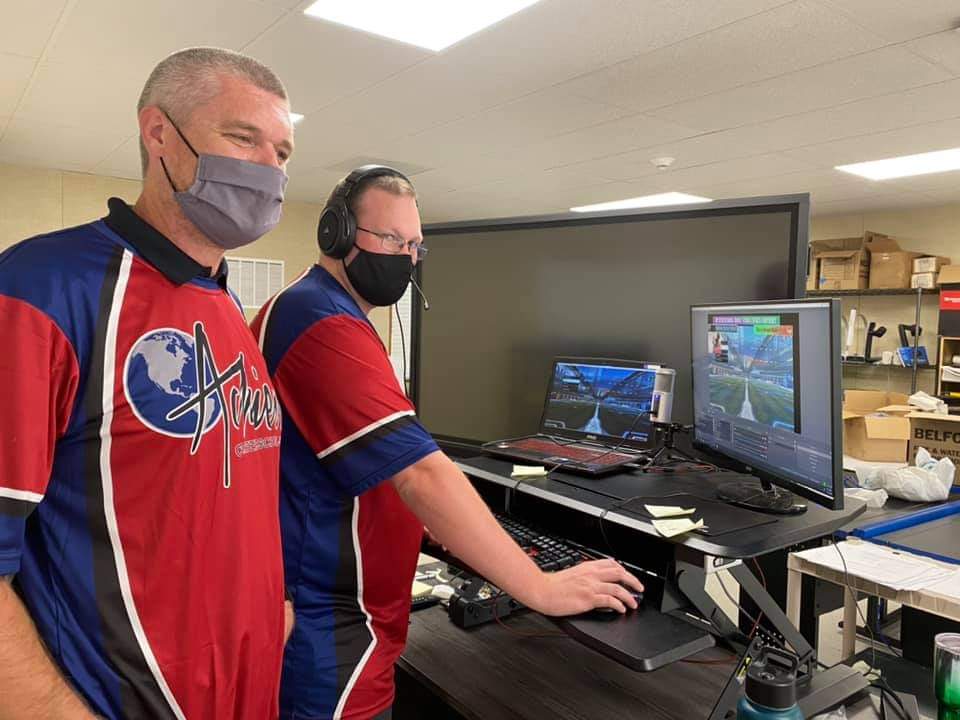The Do’s and Don’ts of Scholastic Esports Programs
What to do and what to avoid when setting up a school's esports program

Esports and academics continue to become more integrated every year. For some school districts and their schools, it’s a relatively easy task to accomplish with lots of support. For others, the resources to draw from may not be as robust or as plentiful.
James Wood, a 2019-20 NASEF Scholastic Fellow, now a Scholastic Mentor, is a middle school math teacher from Achieve Charter School in Paradise, California. There, he was deputized by the Butte County Office of Education to create the esports program for the local area.
Wood offers some simple do’s and don’ts from his own experiences setting up and running an esports program that has quickly grown from his local region to encompass multiple states.
I started my esports program by basically being deputized by the Butte County Office of Education to make an esports league because there wasn’t an existing structure in place. If you’re in a similar situation to me, you really need to start with the basics, so you don’t get overwhelmed.

The Do’s
Do have a timeline. A timeline is one of the most important things to have in the beginning. Participating schools will need lead time to implement everything you’re going to want to do, so account for that. It could be anywhere from two weeks to a couple of months to really get things going.
Do decide in the beginning what game or games you’ll be playing/offering. Students will all have their own preferences for what they like to play, but there are a lot of things you need to take into account as an administrator or teachers hoping to start a program. For me, I teach sixth to eighth grade math, which means my students are around 11 to 13 years old and that we need to avoid games that are more realistic in their violence, such as Call of Duty, Rainbow Six Siege, and even Overwatch. Staying away from first-person shooter games can also make it a lot easier if you’re fighting with a school district to implement an esports program. They’ll often be a lot more receptive if the game is Rocket League or Super Smash Brothers, in which there’s little to no discernable violence.
Do make sure whatever you pick is accessible to your students and your school. Some games may only be playable on PC or cost $60 per license, which may not be feasible for your students or your school district. Cross-platform games are king when you have fewer funds to work with. We chose Rocket League as our game, which satisfied the district, was cheap when we got it (Rocket League is now free-to-play), and is completely cross-platform, meaning that any console or device can play against any other.
Tech & Learning Newsletter
Tools and ideas to transform education. Sign up below.
One other really nice thing about Rocket League is that there’s no voice chat function. Students will chat if there is an option and eventually that has the potential to become a problem, no matter how much you try to put protections in place. It also adds a layer of protection for your students, so keep that in mind.
Do check out scholastic esports organizations. NASEF is one organization that has a lot of free toolkits and guides to help you get started. Many of the NASEF affiliate-run leagues also have similar tools and resources that they can share with you as our community is incredibly helpful and open about sharing resources with one another.
Do make sure you have as many student-led jobs in your clubs as possible. Remember, this is a learning experience for them that will give them skills for their future. If adults are doing all the work, then your program isn’t doing its job. Administrators, teachers, and parents should be there as a safety net to put out the fires when they occur.
Let your students set up the brackets, let them run the tournaments, let them do the marketing for it. Just be that presence that makes sure everything is in compliance and doesn’t get out of hand. Esports provides career opportunities in every industry, so encourage students to explore that as well.
Finally, do make whatever activity you’re doing consistent with regard to a schedule. This is beneficial to students and the parents who are used to knowing their kid has X activity on Y day. A set schedule will help you with attendance, which can be an issue if the schedule is random or unpredictable, and give parents a feeling of legitimacy around your club/program.
The Don'ts
You’re likely going to make mistakes along the way, that is a near certainty. Hopefully, though, I can help shed some light on a few things you shouldn’t do.
First up, don’t think your students understand everything relating to technology just because they’re young. One myth that gets repeated all the time is that the younger generation understands technology like the back of their hand. That’s just not true. Students can be just as inept as adults when it comes to tech; for example, it could be something as simple as registering properly for a tournament that stops them. Try to make things as simple as possible. Being able to record a video cast of how-to do something is an excellent way to head off these issues.
Don’t expect things to go smoothly the first couple of times around. Much of your learning, and your students’ learning, is going to come from trial and error. Scholastic esports is one gigantic trial by fire right now and winging it the day of a tournament is not a great way to approach it. Plan for as much as you can so you can tackle the unexpected as it happens while the tournament or event is going, such as what to do when a controller dies or if the internet goes out.
Don’t ignore programs such as Discord if your district will allow you to use it. Discord is ubiquitous throughout the gaming and esports world. It’s an incredibly powerful tool for creating like-minded communities, for chatting, for voice chatting, and sharing. However, I’ve seen what happens when you have unfettered chat rooms that can be largely anonymous--it can devolve extremely fast into something that will get students expelled and programs shut down. Many clubs successfully use other platforms such as Google Classroom to share information and message only teachers, so keep that in mind if Discord doesn’t work out.
As a teacher or administrator, make yourself familiar with Discord and become comfortable using it. Even if you do not use Discord with your students, most leagues and fellow teachers use it for match scheduling, communication, and helping one another, so familiarity with it is a necessity. If using Discord with your students, make sure there are very clear rules and they are enforced. I deputized a few students to assist in this and set up restrictions on the Discord server so only I could invite new members, the ones I verified were my students in my program.
I know this is a lot to take in if you’re looking to get an esports club or program running in your school or local district, but it’s worth it. The “esports edu” community is great about sharing advice and resources; you can also get free help from NASEF and their Affiliate leagues. Scholastic esports is a great way to connect with students who are already playing these games.
If you’re not quite ready to run your own district-wide program that’s not a problem. Look at what programs are already up and running and reach out to those administrators. See if you can join their program or if they’ll help you set your own up. You’re not alone in this and the esports community is extremely helpful when it comes to sharing information and setting up leagues.
James Wood teaches math to sixth to eighth graders at Achieve Charter School in Chico, CA, and he has a passion for all things gaming. He loves to play games with his family on the weekends. At the schools where he has taught, he has started gaming clubs, esports teams and leagues, board game clubs, and even hosted a middle school esports invitational tournament.
